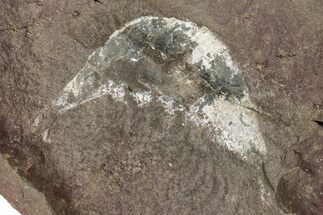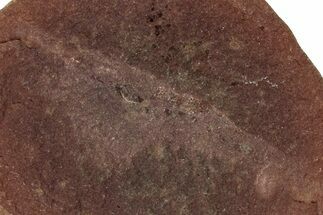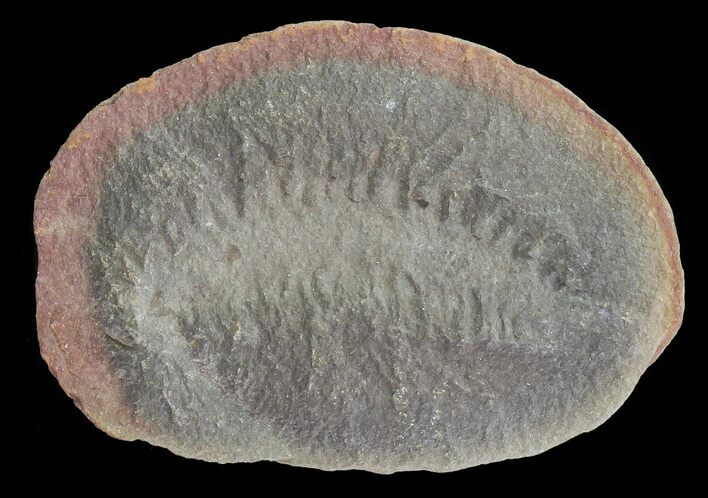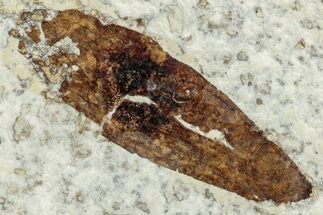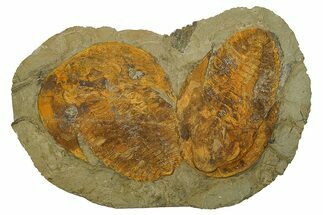This Specimen has been sold.
1.2" Fossundecima Fossil Worm (Pos/Neg) - Mazon Creek
This is a nicely defined fossil worm (Fossundecima konecniorum), preserved inside an ironstone nodule that has been split open. It comes from the famous Mazon Creek Lagerstätte. These ironstone nodules have been collected for decades from the spoil heaps of abandoned coil mines near Coal City, Illinois. The jaws of this worm are easily visible, however can be best viewed under magnification. Both sides of the nodule are included.
Fossundecima konecniorum is considered the second most common worm in the Essex Fauna. They were medium sized polychaete whose head contained a proboscis that housed two triangular jaws. This probiscis could be thrusted to feed, assisting in its grazing predatory habits. It contained short setae that extended out from its segments, which increased as the worm aged.
Fossundecima konecniorum is considered the second most common worm in the Essex Fauna. They were medium sized polychaete whose head contained a proboscis that housed two triangular jaws. This probiscis could be thrusted to feed, assisting in its grazing predatory habits. It contained short setae that extended out from its segments, which increased as the worm aged.
The Mazon Creek fossil beds are a deposit with exceptional fossil preservation, known as a conservation lagerstätte, located in Illinois. This location of late Paleozoic (~307 million years old) biota ranks among the great fossil sites around the world. The large variety of fossils collected here vary between plants and animals, including soft-bodied and insect preservations. Fossils from this site are often quite detailed and are preserved within siderite (iron carbonate) nodules.
Over 500 animal and 200 flora species have been described from Mazon Creek. The event that caused this die-off and preservation is believed to have started with a catastrophic flood event that buried the biota of the modern day Mazon Creek area. The deposition of river-borne silt and clay, brought on by upland erosion and delta progradation, contributed to the incredible preservation of one of the most complete records of Paleozoic biota.
This site has been collected for more than 100 years, and likely will continue to be collected by both professionals and amateurs for many years to come.
Over 500 animal and 200 flora species have been described from Mazon Creek. The event that caused this die-off and preservation is believed to have started with a catastrophic flood event that buried the biota of the modern day Mazon Creek area. The deposition of river-borne silt and clay, brought on by upland erosion and delta progradation, contributed to the incredible preservation of one of the most complete records of Paleozoic biota.
This site has been collected for more than 100 years, and likely will continue to be collected by both professionals and amateurs for many years to come.
SPECIES
Fossundecima konecniorum
LOCATION
Grundy County, Illinois
FORMATION
Francis Creek Shale, Carbondale Formation
SIZE
1.2" long worm
CATEGORY
ITEM
#70578
We guarantee the authenticity of all of our specimens.
 Reviews
Reviews

